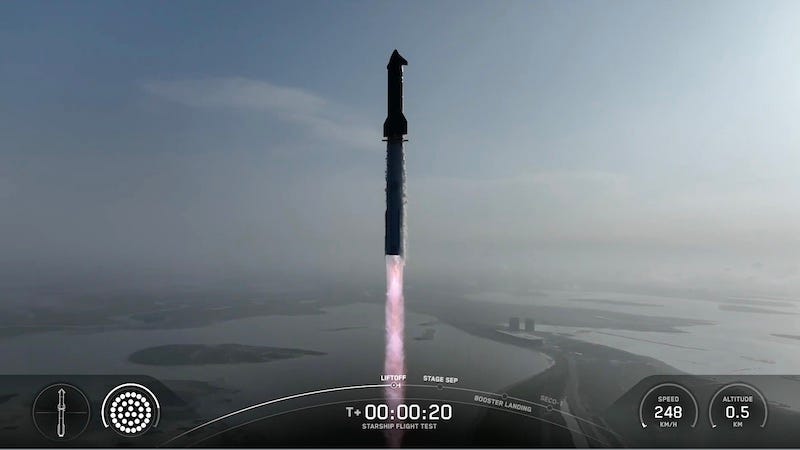FAA Requires Mishap Investigation for SpaceX Starship Flight 9
Focused Only on the Loss of the Starship Vehicle
The FAA is requiring SpaceX to conduct a mishap investigation for the Starship Flight 9 mission that launched on May 27 from Starbase, Texas.
All Starship vehicle and Super Heavy booster debris landed within the designated hazard areas. There are no reports of public injury or damage to public property.
The mishap investigation is focused only on the loss of the Starship vehicle which did not complete its launch or reentry as planned. The FAA determined that the loss of the Super Heavy booster is covered by one of the approved test induced damage exceptions requested by SpaceX for certain flight events and system components. The FAA evaluated each exception prior to launch approval and verified they met public safety requirements.
The FAA activated a Debris Response Area, out of an abundance of caution, when the Super Heavy booster experienced its anomaly over the Gulf of America during its flyback toward Texas. The FAA subsequently determined the debris did not fall outside of the hazard area. During the event there were zero departure delays, one flight was diverted, and one airborne flight was held for 24 minutes.
A mishap investigation is designed to enhance public safety, determine the root cause of the event, and identify corrective actions to avoid it from happening again. The FAA will oversee the SpaceX-led investigation, be involved in every step of the process, and approve SpaceX’s final report, including any corrective actions. A return to flight is based on the FAA determining that any system, process, or procedure related to the mishap does not affect public safety.
The FAA approved test induced damage exceptions for the Super Heavy booster including failure of the grid fin system, poor engine initialization during the landing burn, and a hard water impact due to insufficient engine thrust.
The FAA approved test induced damage exceptions for the Starship vehicle including engine failure during either the in-space burn or the landing burn and failure of either the thermal shield or the flap system during reentry. The loss of the Starship vehicle did not involve any exception.





